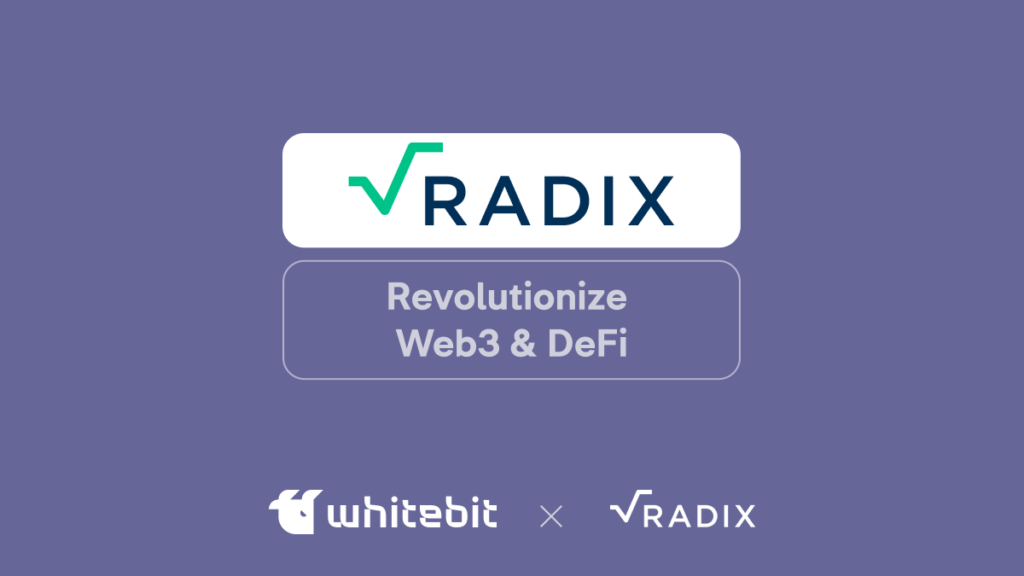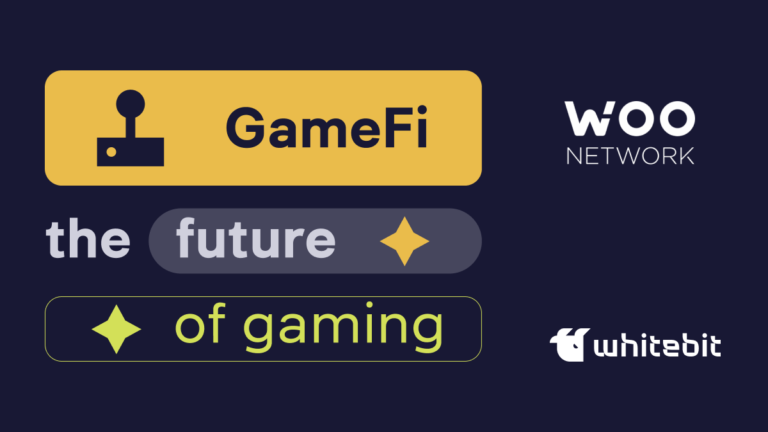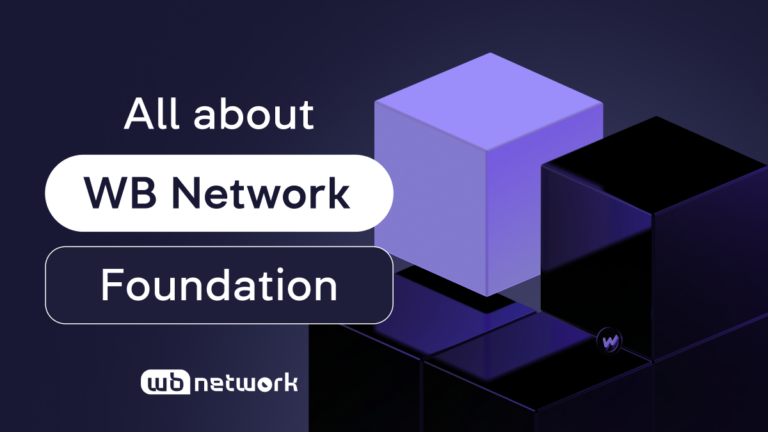Radix: A Radically Different Layer 1

Content
Decentralized finance (DeFi) and Web3 technologies are gaining in popularity, promising more accessible, transparent, and democratic financial services. However, despite the potential benefits, mass adoption of DeFi and Web3 still faces significant challenges such as scalability, usability, and development complexity.
Radix is a platform that aims to overcome these challenges and facilitate the mass adoption of DeFi and Web3 by providing a scalable, secure and easy-to-use decentralized application infrastructure. In this article, we will take a deeper look at what’s hindering the adoption of DeFi and Web3, and explore how Radix’s innovative technology solves these problems, paving the way for a more decentralized financial future.
What are DeFi and Web3?
Decentralized finance (DeFi) and Web3 are two related concepts that are changing the way we think about finance and the Internet.
DeFi belongs to a new form of financial system that is built on decentralized networks like blockchain. Unlike traditional finance, where financial institutions act as intermediaries between individuals and their money, DeFi operates without intermediaries. It allows users to transact directly with each other in peer-to-peer (P2P) mode. DeFi services and protocols use smart contracts to automate financial transactions, which offer market participants a variety of ways to generate passive income. Users independently control their funds and can earn interest on their crypto assets through staking, farming and lending without relying on banks or other financial institutions.
And Web3 belongs to the next generation of the Internet, where decentralized technologies such as blockchain, peer-to-peer networks, and cryptography are used to create a more open, transparent, and user-centric network. Web3 is often associated with DeFi, as both technologies focus on decentralized networks.
Together, DeFi and Web3 represent a powerful force for change in the financial world. By removing intermediaries and giving users more control over their assets and data, these technologies can potentially democratize finance, reduce inequality and create a platform for innovation and development. However, the road to mass adoption of these technologies is still quite thorny, due to issues of scalability, usability, and development complexity.
Three main barriers to the mass adoption of DeFi and Web3
Innovative technologies typically encounter resistance at the beginning of the path to widespread adoption. In the case of decentralized finance, Web3, and blockchain technologies in general, common challenges are customer experience, development, and scaling issues.
User Experience (UX) Challenges
In order for a certain technology to be used by a wider circle of people, it should be clear and simple. Accordingly, the complexity of using DeFi programs is a significant obstacle to their widespread implementation. Many DeFi protocols involve interacting with smart contracts, managing private keys, and navigating through unfamiliar interfaces, which often discourages newcomers. Additionally, DeFi apps typically lack user-friendly features and design elements that users expect from traditional financial services, such as clear instructions and intuitive interfaces. Solving UX problems plays an important role in making DeFi more accessible to a broader audience.
Developer experience challenges
Creating DeFi applications is a difficult process that requires special knowledge of blockchain, smart contract development, and other technical skills. The lack of dedicated tools for efficient development reduces the number of developers who can potentially contribute to the DeFi ecosystem. Improving DX DeFi development, such as providing better tools and documentation, can help attract more developers to the space, accelerate its growth, and avoid some of the mistakes that have led to billions of dollars of DeFi hacks over the last few years.
Scalability challenges
Another major challenge facing the blockchain industry is scalability. Many blockchain networks, including Ethereum, are capable of processing a limited number of transactions per second, which can lead to network congestion, slow transaction processing, and high fees. Partially solving the scalability problem is crucial to unlocking the full potential of DeFi and ensuring its mass adoption.
Overall, removing these barriers is key to realizing the full potential of Web3 and DeFi. Offering a user-friendly and accessible platform, solutions like Radix aim to minimize these barriers and create a more inclusive and dynamic DeFi ecosystem.
What is Radix?
Radix is a Layer 1 protocol that makes it easy, secure, and intuitive for users to use Web3 and DeFi and for developers to program and scale Web3 and decentralized finance (DeFi) applications by reducing the risk of network overload, hacking of smart contracts, and exploits. The project is radically different from competitors and presents itself as a “full-stack” solution, closely integrating:
- Smart Accounts instead of a seed phrase;
- Radix Wallet, which allows you to fully manage your user experience from your mobile device;
- Native tokens instead of spend approvals;
- Implementation of digital identity;
- Transactions in natural language instead of blind signings.
Simplifying the development of DeFi and Web3 products is possible thanks to the special Scrypto programming language, the Radix Engine runtime environment, and Cerberus, a special consensus protocol to ensure unlimited linear scalability.
The team plans to launch its mainnet dubbed Babylon in the second quarter of 2023, with more than 50 projects soon to create DeFi and NFT platforms based on Radix.
How does Radix solve the three barriers to Web3/DeFi adoption?
To solve the “trilemma” of DeFi and Web3, the Radix team uses several tools. Let’s consider them in the context of each problem.
Improving User Experience for DeFi and Web3
From a practical point of view, not all modern Web3 and DeFi programs are convenient to use. Could you imagine your parents entrusting their savings to a seed phrase? And do you sign a transaction in Metamask with peace of mind, knowing for sure that no one will get your NFT?
Radix solves this with an intuitive mobile wallet that gives users complete control over all their funds. All this is thanks to five leading technologies:
Smart Accounts
All users’ funds are held on-chain in their own smart contract, called a Smart Account. This obsoletes seed phrases by giving users native multifactor or social recovery to their account.
Personas
While modern Web3 authentication obsoletes passwords, you are still signing in with your account, giving away the contents of your wallet and entire transaction history. Radix allows its users to have any number of their own smart contracts on-chain that serve as their online identities, fully recoverable in the same way that Smart Accounts are.
Radix Connect
The Radix Wallet is a mobile solution that connects to any desktop session using Radix Connect. Users control their entire experience through their mobile.
Native tokens
On other platforms, tokens are lists of balances in smart contracts that are not accepted by the platform itself. In Radix, all tokens are native, which allows the platform to determine asset behavior and security, greatly reducing the chance of error.
Transaction Manifest
Signing a transaction bears a bit of a risk. Radix fixes this with its Transaction Manifest, which puts users in complete control of their asset transfers, presenting transactions in natural language, and allowing users to specify how many tokens they must receive from a transaction.
The project team plans to launch the new Radix Wallet mobile app in the second quarter of 2023 with the Radix Babylon mainnet.
Improving Developer Experience for decentralized application development
The working environment of DeFi and Web3 developers can hardly be called ideal. Developers spend most of their time on security and testing rather than building new features. Part of the reason is that developers create assets from scratch inside each smart contract, often copying and pasting code from other repositories. As a result, the slightest mistake can lead to a hack. DeFi and Web3 won’t go mainstream until the developer experience is fixed.
Radix solves this with the Scrypto programming language and the Radix Engine runtime environment. These technologies can be considered to be similar to a “game engine” for DeFi and Web3, as all the important components such as token creation, token sending, and token holding, are available to developers off the shelf, just like a game engine gives games developers physics and gravity off the shelf.
With developer-friendly tools, creating DEXs such as Uniswap is reduced from over 750 lines of Solidity to less than 180 lines of Scrypto, significantly improving developer productivity and the security of their smart contracts.
Scalability
Almost all smart contract platforms have their own vision of solving the age-old problem of scalability. The Radix team has found a potentially successful approach for global DeFi and Web3. Each transaction on Radix will have its own shards, and Cerberus’ special cross-shard consensus protocol ensures that Radix gets the best of both worlds: the linear scalability offered by sharding while maintaining atomic composability between these shards. The implementation of the idea is included in the upcoming release called “Xi’an”.
Radix’s innovative technology and approach to solving the problems of scalability, usability and development of Web3/DeFi applications make the project an extremely promising option for users who want a safe, easy and intuitive Web3 and DeFi experience, and developers who want to further contribute to the development of the field of decentralized finance. To learn more about Radix, watch their RadFi keynote.








